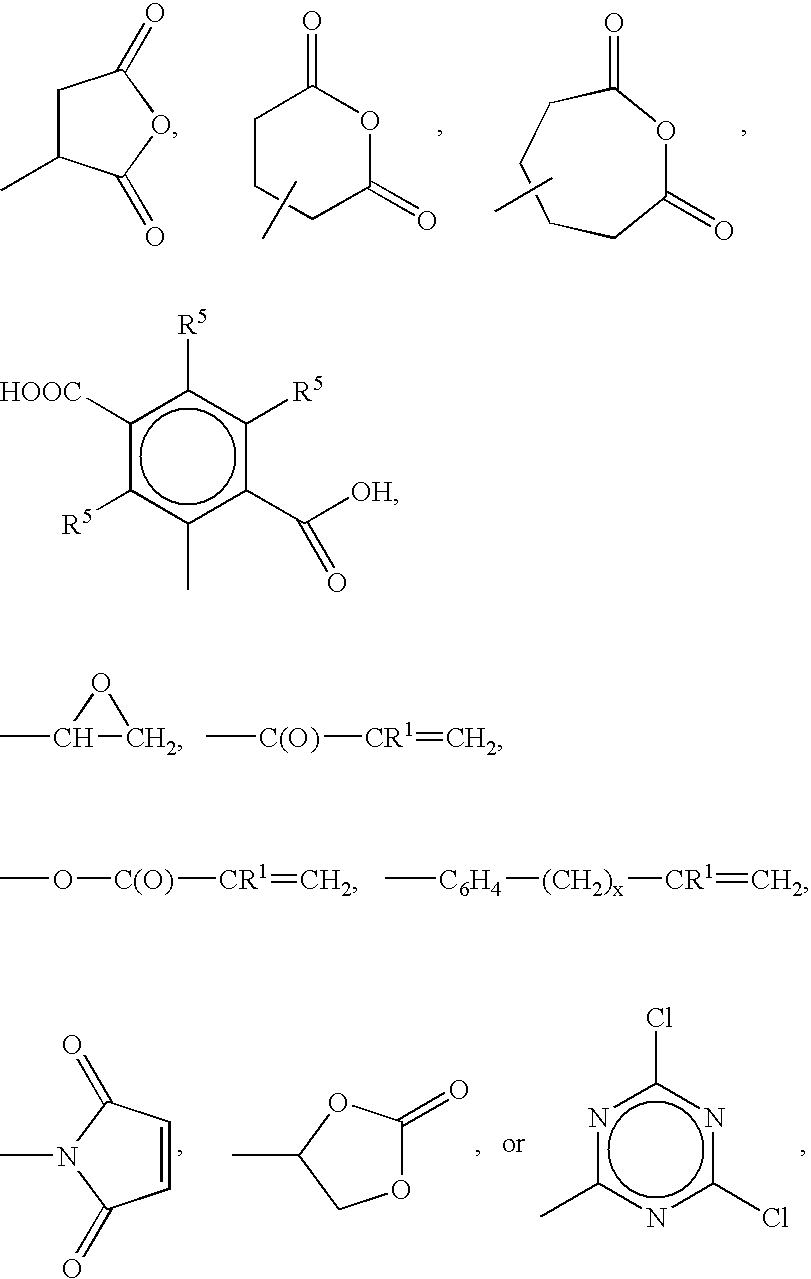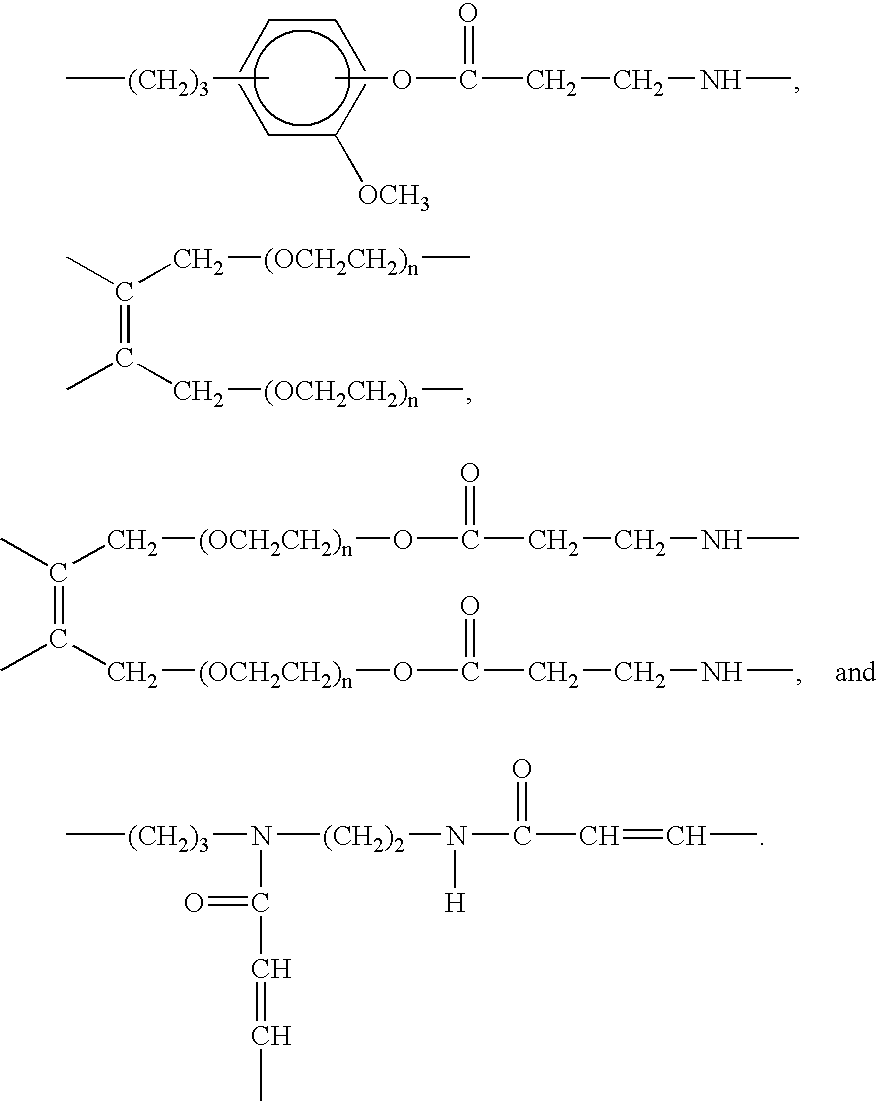Process for preparing dispersions of crosslinked organopolysiloxanes
a technology of organopolysiloxanes and dispersions, which is applied in the direction of layered products, chemistry apparatus and processes, synthetic resin layered products, etc., can solve the problems of high cost and inconvenience, unsatisfactory compositions, and coarse emulsions, so as to achieve simple and reliably implementable processes and low particle size
- Summary
- Abstract
- Description
- Claims
- Application Information
AI Technical Summary
Benefits of technology
Problems solved by technology
Method used
Image
Examples
example 1
[0229] In an Ultra-Turrax T 50 emulsifier (Janke & Kunkel) 5 g of isotridecyl decaethoxylate, 85% in water, available commercially under the trade name Lutensol TO 109 (BASF), and 8 g of demineralized water are used to produce an emulsifier mixture, to which 100 g of a freshly prepared homogeneous siloxane polymer / silane mixture are added, consisting of 99.65 g of polydimethylsiloxanediol having a terminal OH group content of 1100 ppm by weight, as siloxane (2), and 0.35 g of N-morpholinomethyltriethoxysilane as silane (3). Dilution is then carried out in portions with a total of 90.1 g of fully demineralized water, to give a milky white emulsion having an average particle size of 309 nm. The solids content of the emulsion is 50.7%, its pH 6.0. The emulsion remains homogeneous and stable even after 6-month storage at room temperature. Evaporating the emulsion after a drying time of 24 h at 25° C. produces a film of gel-like elasticity which has adhesive properties and adheres well t...
examples 2 to 6
[0230] Further emulsions are prepared in the same way as in Example 1, he amounts indicated in the table below:
Silox-Silox-Sil-FilmaneaneaneSolidsParticleassessmentExam-(1)(2)(3)contentsizeafter dryingplein gin gin g(%)pH(nm)24 h / 25° C.2—99.560.4450.57478very elastic,(2a)transparent3—99.400.6049.97481elastic,(2a)transparent4—99.220.7950.56.5nd*elastic,(2a)opaque,littleadhesion5—94.0 6.049.88nd*little(2a)elasticity,opaque620.080.0 0.3752.072810 very elastic,(1a)(2a)transparenttacky
*nd = not determined
[0231] The solids content is determined to constant weight at 150° C. using the Mettler Toledo HR 73 apparatus. The particle sizes are determined using a Coulter N4 plus. [0232] Siloxane (1a) used is: [0233] Copolymer of 3-(2-aminoethylamino)propylmethylsiloxy and dimethylsiloxy units with an amine number of 0.145, a viscosity of 4700 mm2 / s (at 25° C.), and an OH / OMe end group ratio of 54 / 46. [0234] Siloxane (2a) used is: [0235] Polydimethylsiloxanediol having a terminal OH group cont...
example 7
[0239] In an Ultra-Turrax T 50 emulsifier (Janke & Kunkel) 2.5 g of isotridecyl decaethoxylate (Lutensol TO 109, BASF), and 8 g of water are used to prepare an emulsifier mixture to which 99 g of a freshly prepared homogeneous siloxane / silane mixture are added consisting of 97.56 g of polydimethylsiloxanediol (2a), 1.0 g of siloxane (1a), and 0.44 g of N-morpholinomethyltriethoxysilane. Dilution is then carried out in portions with a total of 8.9 g of water, to give a pastelike, milky white emulsion of firm consistency. The solids content of the emulsion is 86.3%. The emulsion paste remains homogeneous and stable even after 8-month storage at room temperature.
[0240] Evaporation of the emulsion at 25° C. produces skinning after just 45 minutes, and after 5 hours its state is virtually that of a compact film. After 24 h at 25° C. an elastic film is obtained which adheres to glass, paper or aluminum. The values measured on a standard dumbell S3A to DIN 53504-85 are as follows: elongat...
PUM
| Property | Measurement | Unit |
|---|---|---|
| temperature | aaaaa | aaaaa |
| viscosity | aaaaa | aaaaa |
| molar mass | aaaaa | aaaaa |
Abstract
Description
Claims
Application Information
 Login to View More
Login to View More - R&D
- Intellectual Property
- Life Sciences
- Materials
- Tech Scout
- Unparalleled Data Quality
- Higher Quality Content
- 60% Fewer Hallucinations
Browse by: Latest US Patents, China's latest patents, Technical Efficacy Thesaurus, Application Domain, Technology Topic, Popular Technical Reports.
© 2025 PatSnap. All rights reserved.Legal|Privacy policy|Modern Slavery Act Transparency Statement|Sitemap|About US| Contact US: help@patsnap.com



